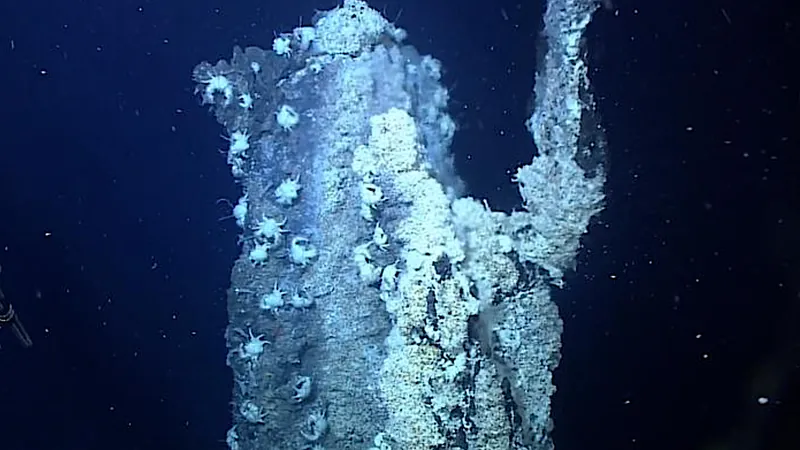
A Deep-Sea Worm's Extraordinary Survival: Poisoning the Toxicity
2025-08-30
Author: Charlotte
Meet the Incredible Paralvinella hessleri
In the depths of the Pacific Ocean, an astonishing creature named Paralvinella hessleri thrives in one of the most inhospitable environments on Earth—deep-sea hydrothermal vents. This brilliant little worm has developed an extraordinary method for surviving the lethal levels of toxic arsenic and sulfide that surround it.
A Shocking Discovery: Turning Poison into Protection
Research led by Chaolun Li from the Institute of Oceanology in China reveals how this worm ingeniously detoxifies harmful substances. Instead of succumbing to danger, P. hessleri absorbs arsenic and combines it with sulfide from hydrothermal vent fluids, transforming it into a less hazardous mineral known as orpiment.
A Glimpse into the Deep Sea Life
P. hessleri stands out not only for its detoxification methods but also for its striking appearance. With bright yellow coloration, these worms dramatically contrast the dark surroundings of their thermal habitat. As they colonize the vent fields, they create a stunning spectacle that captivates researchers and visitors alike.
Unlocking the Mystery of Marine Adaptation
The research team used advanced imaging and analyses to uncover the detoxification process, emphasizing how P. hessleri thrives where others would perish. This exceptional adaptation has been observed in related species and even some snails, indicating a potentially broad strategy among marine life to manage toxic elements.
An Artistic Twist: Orpiment's Historical Significance
Dr. Hao Wang, a coauthor of the study, marveled at witnessing these vibrant yellow worms for the first time, drawing parallels between the mineral they produce and its historical use in art. Orpiment was prized by medieval painters, making this biological phenomenon a fascinating convergence of nature and history.
Rethinking Marine Toxicology
The implications of such discoveries invite us to reconsider how marine species interact with their environments. The authors hope their findings encourage further research into how other marine life might harness toxic elements for survival.
Conclusion: Nature's Resilience
As we dive deeper into understanding such unique organisms, the story of Paralvinella hessleri reminds us of the extraordinary adaptations life can employ to thrive, even under the most extreme conditions. This little worm's tale serves not only as a testament to resilience but also as a call to explore the mysteries hidden beneath ocean depths.









 Brasil (PT)
Brasil (PT)
 Canada (EN)
Canada (EN)
 Chile (ES)
Chile (ES)
 Česko (CS)
Česko (CS)
 대한민국 (KO)
대한민국 (KO)
 España (ES)
España (ES)
 France (FR)
France (FR)
 Hong Kong (EN)
Hong Kong (EN)
 Italia (IT)
Italia (IT)
 日本 (JA)
日本 (JA)
 Magyarország (HU)
Magyarország (HU)
 Norge (NO)
Norge (NO)
 Polska (PL)
Polska (PL)
 Schweiz (DE)
Schweiz (DE)
 Singapore (EN)
Singapore (EN)
 Sverige (SV)
Sverige (SV)
 Suomi (FI)
Suomi (FI)
 Türkiye (TR)
Türkiye (TR)
 الإمارات العربية المتحدة (AR)
الإمارات العربية المتحدة (AR)